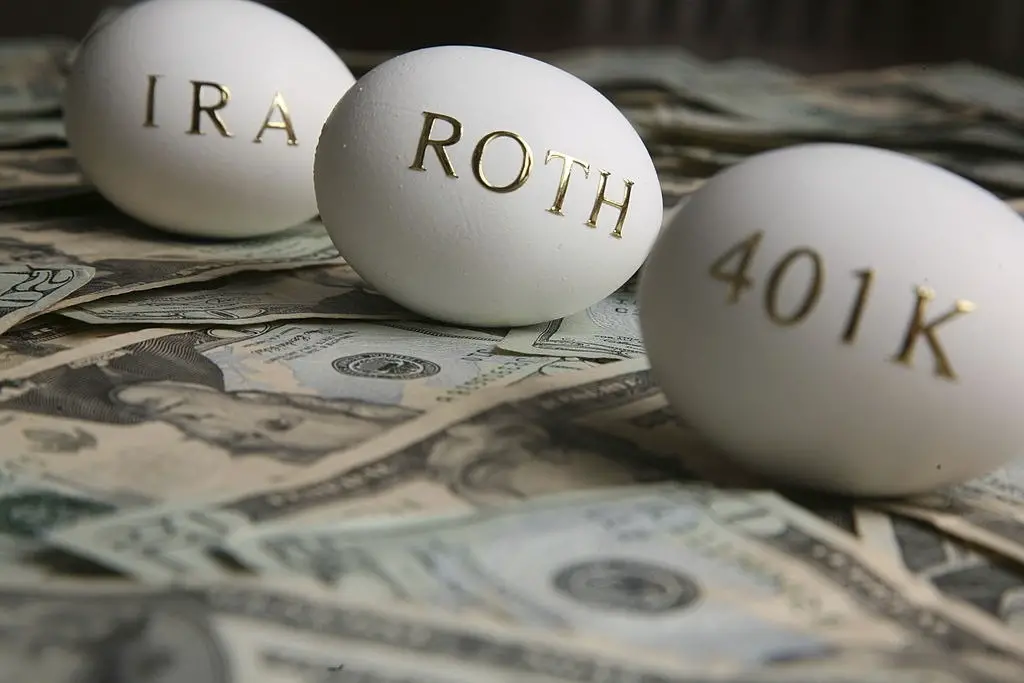You may have an employer who does not offer you a retirement plan. This puts you in a difficult place where you don’t have a retirement savings strategy. This situation would be experienced by both the self-employed and those who have created their own business.
They could not ask the employer to provide them with a pension plan. If you are in a situation where you do not have a retirement plan, you should look for another option. This is important because saving money for retirement is key.
Everyone knows the importance of saving for retirement. In general, the sooner you start saving, the better, thanks to the power of compound interest rates. Many financial experts advise their clients to plan for retirement with their first paycheck.
Retirement savings become easier and more natural for employees working in companies that offer retirement benefits like Plan 401 (k); however, not everyone has access to this benefit.
Read also: How to Protect your 401(K) in the Event of Divorce
Top 5 ways to plan your retirement if your employer doesn’t offer a 401k

Individual Retirement Accounts (IRAs)
As a first step, you must open an Individual Retirement Account (IRA) and contribute annually up to the approved limit. IRAs are tax accounts and because of their complex revenue offer similar returns as the 401 (k) plan sponsored by the company.
IRA accounts are of two types: traditional and Roth. The traditional plan offers tax-deductible contributions, while the Roth IRA helps with tax-free retirement withdrawals. While both investment vehicles promise better results, it is imperative to understand the difference between them and choose the right one for you.
You need to calculate the tax liability and then decide between a traditional IRA and a Roth IRA. If you are currently in a higher tax bracket, you should choose a traditional IRA; however, if you plan to be in a higher tax bracket when you retire, you should choose a Roth IRA.
SEP-IRA
SEP-IRA is another great way to save money for retirement. Known as the ‘simplified single retirement account for employee retirement’, this is one of the common types of traditional IRAs eligible for the self-employed, self-employed, small business owners or independent contractors.
Business owners with one or two employees or anyone with an independent income open a SEP IRA to enjoy retirement benefits for yourself and your employees. Contributions to the SEP IRA are tax deductible; however, withdrawals are taxable. Annual contribution limits are higher in SEP-IRAs than in traditional or Roth IRAs.
One participant / only 401 (k)
This is a qualified retirement plan specifically designed for business owners without full-time or freelance employees. This plan covers both you and your spouse. Only 401 (k) follows similar characteristics and rules of an employer-sponsored plan or an individual 401 (k) plan, except that it qualifies as a business owner.
According to the tax administration, you can make Solo 401 (k) contributions both as an employee and as an employer.

Go for a better job
Many people accept job offers from companies that do not offer pensions to gain experience. In addition, some startups may offer you shares as an incentive, rather than as a basic retirement plan, or they may promise to provide a pension to employees who stay on board for more than two years.
In such a case, you may need to start a discussion on retirement benefits and see if the employer is interested in considering your offer. If there seems to be no change in the employer’s plans, you may want to look for a job that offers these benefits.
It is imperative to look for a reputable and well-established organization that offers a variety of benefits, including a retirement plan, and helps you save money from your salary without much hassle.
Taxable brokerage accounts
This approach is often underestimated when it comes to investing money for the future, as it is fully taxable, unlike traditional retirement plans. However, it can be helpful if you choose to invest wisely in stocks, bonds, mutual funds over a long period of time and take advantage of market returns.
Keep in mind that the right combination of assets will balance your retirement schedule and your risk tolerance. Learn about the pros and cons of investing in the market and investing money based on your risk tolerance, cash flow needs, time horizon, and retirement goals.
Seek the help of a qualified financial advisor or expert who will use their knowledge and wisdom to create a diverse portfolio based on your priorities.
How to prepare for retirement if your employer does not offer 401 (k)

Talk to your employer
“Sometimes an employer doesn’t know it’s necessary, so they don’t look at the options available and don’t configure one for their employees,” said financial advisor Winnie Sun, founder of Sun Group Wealth Partners.
Be sure to let your employer know that you have an incentive to offer such a plan.
This includes tax breaks available to employers who sponsor a retirement plan, according to Aaron Pottichen, senior vice president of Alliant Retirement Consulting.
The owner, your boss, could use the plan to protect his or her own taxable income. And instead of paying cash bonuses, they can contribute to a savings program and encourage employees to stay.
Open your own retirement accounts
If you are investing on your own, there are several ways to save money for your long-term goals.
Alternative ways to save for retirement
Retirement savings are one of the biggest financial challenges you will face. There are several schools of thought on how much money you will need to live comfortably in retirement. Regardless of that number, being proactive in saving is essential if you want to meet your retirement goals.
Related: Top 5 Tips to Reduce your Cost of Living in Retirement
While many save for retirement in plans sponsored by employers like 401 (k) and 403 (b), they are not always an option. But the good news is that there are many other ways to accumulate savings.
Here’s how you can achieve retirement savings goals even if you don’t have a 401 (k).
Watch out for great opportunities
Apart from housing, taxes, debts and social security, especially social security, are probably the biggest lever for a pension to function with insufficient savings.
Debt: Imagine if you could spend the money you currently use to repay debt each month! Debt relief costs a little in advance, but it is crucial that you are financially free in the long run. Paying interest on debt is like burning money. Eliminate your debt as soon as possible.
Must read: How to Prioritize Which Debt to Pay Off First

Invest in a small business
Another option to help you achieve your retirement goals is to invest in a small business. Investing in a small business does not necessarily mean becoming a business owner. If you don’t want to drive a boat, you can invest in a regular business as a silent partner.
Whether you choose entrepreneurship or invest, the return on small businesses is not limited, and the potential return on investment is greater than other alternatives. Of course, these investments involve great risks. There is no guarantee that the time or money you invest in a small business will create a significant return over time. Choose wisely.
Real Estate Investments
Another way to save for retirement is to invest in real estate. If you have an IRA or brokerage account, you may already have access to real estate through a mutual fund or ETF.
“The best option for investors is to buy a fund that invests in real estate mutual funds (REITs) around the world,” says Mark Hebner of Index Fund Advisors in Irvine, California. “REITs are extremely profitable, transparent and liquid. Access to REITs through a mutual fund allows investors to achieve global real estate diversification in a cost-effective way. “
Outside of REIT, you can buy a property directly to generate income during your retirement years. For example, if you are investing in a multifamily house, you can live in one part and rent another. This effectively reduces your total cost of living while repaying your mortgage.
You can later decide to continue renting the property and receive regular rental income. Alternatively, you can sell the house (ideally valued) and use the income for living expenses or other investments.
Determine what matters and dramatically reduce costs
Living frugally will never be an easy street, but it can be extremely helpful to just focus on the things that really matter to you.
Most financial advisors assume that we need to maintain our consumer habits throughout life when we retire. While most of us do, many people are redefining themselves in retirement and can dramatically reduce spending, one of the best ways to secure retirement.
Do not set a date
Once upon a time, a long time ago … we set a date and planned a big retirement party. You went to work one day and never again.
More and more of us these days have a different perspective when it comes to retirement. Today’s retirees retire, working part-time for a few years or finding a job after retirement.
Be healthy and choose your insurance wisely
Some retirees spend more on reimbursable medical expenses during their lifetime than they earn on social security. There are many things you can do to reduce these costs if you stay healthy and choose Medicare supplement coverage carefully.
You should research the best Medicare supplement plan each year. Plans are changing. Your health needs to change.
Can I open a 401k on my own?
Setting up a 401 (k) plan can be as simple or complex as you want. Most people entrust at least one part of the process to external partners. In particular, they use a “model” legal document to establish a 401 (k) plan, which is significantly cheaper than hiring a lawyer to draft the original documents.
If your retirement plan isn’t particularly complex, or if you don’t want to be fancy (and if you’re willing to pay for extra features), you’ll probably use preconfigured 401 (k) service provider programs. These programs are often referred to as “shippers” or prototype plans and are an excellent option for most companies and nonprofits.
Here are the key elements of setting up a 401 (k) plan
Now that you know the bigger picture, you are ready to establish a plan as an employer or self-employed person. Whether you are making a plan for a large company or yourself, the following steps are:
- If you are independent, decide whether you want SoloK, SEP or SIMPLE. Decide which provisions of the plan you want (loans, Roth 401 (k), safe harbor, equalization?).
- Select a service provider (estimate flat rates, capital costs and fees, technology, and other features).
- Fill in the adoption contract and other contracts and send them to the supplier (s).
- Communicate and educate: Inform employees (if applicable) about the existence and characteristics of the plan.
- Create individual participant accounts.
- Fund the plan through a payroll or any employer contribution.
- Review the plan regularly to make sure it meets the needs of plan participants.
- Follow and adjust the plan as regulations change and your needs evolve.
- Constantly provide the necessary information to the participants.
Ways to Save for Retirement without a 401(k)
If you’re frustrated with all the retirement planning tips that put the 401 (k) plan ahead and at the center, you’re not alone. Almost a third of all workers do not have access to an employer-sponsored retirement savings plan1. And while some employees have 401 (k), not all employers are offered to match their workers ’bonuses.
But even if you find yourself without a 401 (k) option or without an employer plan, don’t panic! There are a lot of options available to help you invest 15% of your gross income in retirement savings, which I recommend. You can still achieve your retirement goals.
Here’s how to save for retirement when you don’t have a 401 (k).
Open a Roth IRA account.
While you can’t save for retirement with a 401 (k) or 401 (k) supplement, you can get the maximum out of a Roth IRA. You can currently invest $ 6,000 per year in your Roth IRA, or $ 7,000 if you are 50 or older. You can choose from thousands of mutual funds, which facilitates an even distribution of investments in all four categories: Growth, Growth and Income, Aggressive and International Growth.
Use a taxable account to invest.
If you don’t have any of the above options, or if you can save more after maximizing your 401 (k) and IRA options, contributing to a taxable investment account is a great way to achieve this goal. Investment of 15%. .
Use a direct deposit.
One of the best parts of a 401 (k) plan is that your money is automatically deducted from your salary, preventing you from accidentally spending the money you should be saving. You don’t even have to think about investing for retirement – it happens!
You can recreate this powerful effect by placing a direct deposit of your salary on your chosen investment option. However, only if your money is deposited automatically does it not give you permission to run on autopilot with your general retirement plan.
Be sure to communicate regularly with your investment professional to keep you informed of your future retirement.
What happens if my employer doesn’t match my 401k?
If an employer doesn’t match your 401k, here are two things you can do to recover and one to avoid.
Increase contributions
Keep in mind that increasing contributions reduces taxable income. Employees who cannot afford to increase contributions immediately should know if their employer has an automatic increase. This allows workers to increase their contributions in small steps, for example by 1% to 2% each year. Employees must also increase their contributions when they receive a raise.
Consider the Roth IRA
You can also contribute to the Roth IRA and an employer-sponsored retirement plan, such as the 401 (k). Income constraints could affect eligibility.
Contributions to the Roth IRA are not tax-deductible as 401 (k), but withdrawals are non-taxable during retirement. The Roth IRA can be especially attractive to those who think they will be in a higher tax bracket in retirement.
It could also be a good choice for a younger worker with a lower salary and lower tax rates than an older worker in a workplace with higher salaries. For 2021, the annual contribution limit for the Roth IRA remains at $ 6,000, unchanged from 2020. The limit is $ 1,000 more for those aged 50 and over.
Finally
If an employer does not offer a retirement plan, another way to save for retirement
Is to establish a retirement plan — such as a SEP IRA, a one-person 401(k), Solo 401(k) plan, Rollover IRA, Traditional IRA, The federal government plan, Nonqualified deferred compensation plans (NQDC), Guaranteed income annuities (GIAs), Cash-value life insurance plan or even a pension plan, depending on your income — as a self-employed and employee.

